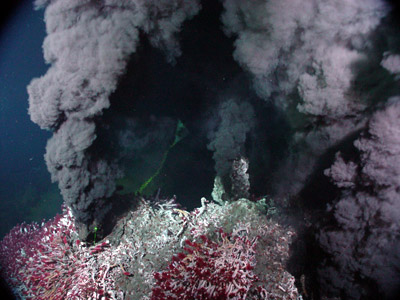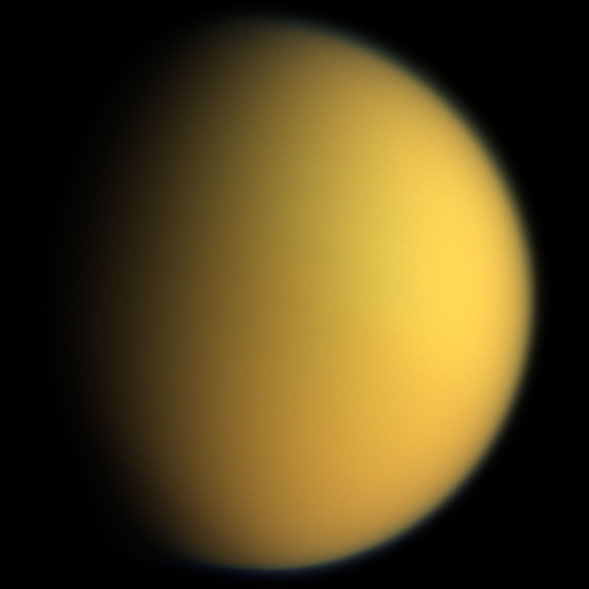Contributed by Ryan Blackwell
Earth’s Age
Our planet’s approximate age is a surprisingly common misconception among the public today. Earth’s age is not in the order of thousands, hundred of thousands, or millions of years. Thanks to the efforts of modern science, we know the Earth to be around 4.6 billion years old. A less common misconception involves just how long Earth has been habitable. Conditions on Earth were not immediately suitable for life, nor did life originate late in its geologic history. Evidence suggests that the Earth was a largely inhospitable place for the first 400-600 million years of its existence. At its inception, and for a period afterwards, our planet had a molten surface under constant bombardment from meteors. Not the ideal vacation spot. Until its molten surface cooled allowing the crust to form and meteor strikes became less frequent, the development and sustenance of life would be virtually impossible. Once these extreme conditions lessened to a large enough degree, however, life could take shape. Sure enough, fossil records indicate the existence of cellular life around 3.6 billion years ago. Now you may be thinking to yourself “if life could not exist for the first 400-600 million years, the Earth is roughly 4.6 billion years old, and life does not appear until around 3.6 billion years ago, that still leaves another 400-600 million years unaccounted for.” What was occurring during this period of time you ask? The answer: chemical evolution.
Chemical Evolution
So what is chemical evolution? It is not the evolution of life. Chemical evolution is the evolution of lifeless organic matter. To be a bit more specific, chemical evolution explains the synthesis of organic matter from inorganic molecules followed by the increasing complexity of lifeless organic matter over time. The process gave rise to self-replicating molecules, provided the building blocks for life, and eventually led to the emergence of the first organisms. The appearance of self-replicating molecules is key to further chemical evolution. Self-replication inevitably gives rise to relatedness among molecules. If a cycle involved in self-replication diverges into two different cycles where one cycle produces the same molecule at a higher rate using the same materials, then this new cycle should outcompete and replace the original cycle.
Many experiments, beginning with those of Stanley Miller in 1953, have shown that given the right mix of chemicals, liquid water, and energy, simple molecules will combine and rearrange to form complex organic matter such as the amino acids essential to life. Of course these chemical ingredients had to come from somewhere. Most hypotheses for their sources fall into one of two categories: extraterrestrial or terrestrial origins. The Earth was either seeded by meteors already carrying simple organic matter (pseudo-panspermia), or organic matter formed on Earth such as around deep sea hydrothermal vents. No matter the source, once present on Earth, chemical evolution drove the synthesis of amino acids, ribose and other sugars, and other important chemical components of life from simpler ingredients, but before the emergence of more conventional deoxyribonucleic acid (DNA) based life, there existed a ribonucleic acid (RNA) world.
An RNA World
The current leading hypothesis states that RNA evolved before DNA as the primary genetic material for early life, and even before RNA there likely existed some even simpler genetic system, but we will focus on the better understood RNA system. First off, here is some preliminary information for those of you not overly familiar with DNA or RNA. At their foundations, RNA is typically composed of a single strand/chain of nucleotides whereas DNA is composed of two antiparallel strands/chains of nucleotides. A nucleotide is a nucleoside with an attached phosphate group, and a nucleoside is a nitrogenous base/nucleobase attached to a five-carbon sugar. These sugars essentially form the backbones of DNA and RNA. The five-carbon sugar that forms the backbone of RNA is ribose.
Forming RNA from the ribose produced from chemical evolution poses some problems, however. The ribose itself would have rapidly degraded if not used quickly, but the larger problem is that conditions were not conducive for the formation of nucleosides from ribose and the four canonical RNA nucleobases (adenine, guanine, cytosine, and uracil). These four nucleobases were probably not abundant on the early Earth, and conventional base pairing with the four canonical nucleobases does not occur in water, so then how could RNA exist? Another refresher for people not so familiar with DNA and RNA: a base pair is a pair of complementary nucleobases joined by weak hydrogen bonds. The inability to form base pairs may seem irrelevant in single stranded RNA, but a diverse array of RNA molecules rely on the ability of some strands to fold in on themselves and form base pairs. That aside, research shows that ribose more readily combined with likely more abundant alternative nucleobases to form nucleosides in early Earth-like conditions, and those nucleobases more readily formed base pairs in water. This suggests that the base pairs of RNA we see today (A-U and G-C) were not the same at its inception, yet early RNA likely shared similar functions with modern RNA or at least eventually evolved them.
The Final Frontier
With some of the basics on the origin and evolution of life out of the way, let us apply them to other models within our solar system.
Choose a satellite from Images 1-3, below:

Image 4…. Welcome to Titan, or at least an artist’s impression of it. It is Saturn’s largest satellite, and it is also the only satellite with a dense, Earth-like atmosphere within our solar system. NASA’s Cassini probe has shown that seas and lakes of liquid methane dot its surface. Simulations of Titan’s chemistry indicate the presence complex organic matter making it of prime exobiological interest. These same simulations have generated solid organic matter known as tholins, which were subsequently found to have nutritious properties for specific microorganisms. Though the surface is too cold to support life, hypothetical subsurface oceans of water could be warm enough to sustain it if it existed. Alternatively, due to Titan’s unique chemistry, life with a radically different chemistry from our own could possibly evolve in such conditions.

Image 5… This is not a picture of Europa, but instead of life under the ice off the coast of McMurdo Sound, Antarctica. This image simply illustrates life that has evolved to thrive in cold water environments under the ice on Earth. Europa is one of the four Galilean moons of Jupiter. As seen in image 2, it has an outer crust composed entirely of water ice. Current models indicate that this outer crust is greater than 4km but less than 10km thick, and that it covers a 100km deep subsurface ocean of water. Despite the low temperatures, studies suggest that temperatures are high enough and enough solar energy reaches the icy moon to sustain life. Additionally the ice shell is thin enough to experience convective overturn of the surface ice. That means that oxidants and organics trapped in the ice are transported to the subsurface ocean making them available for use in chemosynthetic redox reactions at…

Image 6… Deep sea hydrothermal vents! Therefore, the development of indigenous life on Europa is considered a possibility. Again, this is not an image of Europa, but of a possibly analogous environment on Earth. Just as on Earth, deep sea hydrothermal vents could provide the organic matter and energy necessary for chemical evolution and the possible emergence of life. Given Europa’s conditions, anaerobic, archaebacteria-like organisms seem to be the most likely candidates for life. Terrestrial archaebacteria provide nice examples of what to expect.

Image 7… Oh, so you don’t feel like participating, or perhaps my writing bores you? Either way, welcome to the Moon. Since you obviously don’t care about the origins and evolution of life, you’ve been sent somewhere where life has never existed save for a few days from 1969 to 1972. Unless you’re a tardigrade (a microorganism well adapted to extreme environments and the only known animal capable of surviving the vacuum of space unprotected) you won’t have long to enjoy your solitude.
Here are some further readings if you would like more information on the subjects presented:
Brasier, Martin D., and David Wacey. “Fossils and Astrobiology: New Protocols for Cell Evolution in Deep Time.” International Journal of Astrobiology 11.04 (2012): 217-28.
Bray, Veronica J., Gareth S. Collins, Joanna V. Morgan, H. Jay Melosh, and Paul M. Schenk. “Hydrocode Simulation of Ganymede and Europa Cratering Trends – How Thick Is Europa’s Crust?” Icarus 231 (2014): 394-406.
Chen, Michael C., Brian J. Cafferty, Irena Mamajanov, Isaac Gállego, Jaheda Khanam, Ramanarayanan Krishnamurthy, and Nicholas V. Hud. “Spontaneous Prebiotic Formation of a β-Ribofuranoside That Self-Assembles with a Complementary Heterocycle.” Journal of the American Chemical Society 136.15 (2013): 5640-646.
Joyce, Gerald F. “RNA Evolution and the Origins of Life.” Nature 338.6212 (1989): 217-24.
Raulin, François. “Exo-Astrobiological Aspects of Europa and Titan: From Observations to Speculations.” Space Science Reviews 116.1-2 (2005): 471-87.
Smith, John Maynard, and Eörs Szathmáry. “Chemical Evolution.” The Major Transitions in Evolution. New York: Oxford UP, 1995. 27-37.


